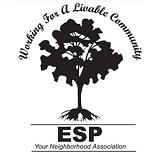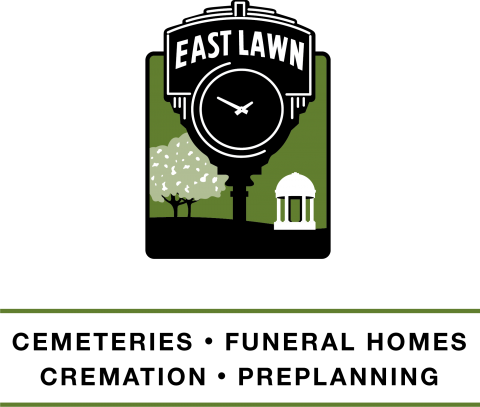 On August 11, 2011 East Sacramento Preservation requested Councilman Cohn to explain his actions regarding the City’s redistricting maps. Following the reprint of our request is Cohn’s full, unedited response.
On August 11, 2011 East Sacramento Preservation requested Councilman Cohn to explain his actions regarding the City’s redistricting maps. Following the reprint of our request is Cohn’s full, unedited response.
Our post: In a surprise move, Sacramento City Council supported a redistricting map drawn by Councilman Steve Cohn. This action pre-empts the Sacramento Redistricting Citizens Advisory Committee empanelled to offer redistricting plans based on 2010 census data.
East Sacramento Preservation wonders if the committee was just window dressing.
To ignore the public process because you don’t like the results is insulting to all citizens, especially the public volunteers who worked on the panel.
East Sacramento Preservation respectfully asks Mr. Cohn to explain his actions.
Cohn’s Response:
Thank you for contacting my office regarding the redistricting of the City’s eight Council districts. By law, the City Council must adopt the final district boundaries no later than the Council meeting on Tuesday, September 6, 2011.
The 2010 U.S. Census counted the City’s population as 466,488, or 58,311 residents per district. Two major factors made this year’s redistricting especially difficult. First, the northernmost District 1 that currently includes North and South Natomas grew so fast that it is now double the population of most of the other districts. This necessitated moving other districts, including my own District 3, further north. Second, there was a strong push by the Downtown Partnership and others to put the Central City (Midtown and Downtown) together in one district.
The City Council sought public input to a greater extent than ever before. First, the City developed, free to the public, online tools and resources to create, share, and submit district plans to the City. The City’s webpage also has a window dedicated to redistricting. http://www.cityofsacramento.org/redistricting/ Second, the Council appointed 15 City residents to the Sacramento Redistricting Citizens Advisory Committee, which engaged in two months of detailed study, analysis, public input, and debate before issuing its final report on July 7, 2011.
The Sacramento Bee and others have criticized the Council for not adopting one of the four maps recommended by the Advisory Committee. But, in fact, the Committee never agreed on one map, instead forwarding four possible maps (A-D) for the Council’s consideration, along with other information, including a discussion of communities of interest (e.g., the LGBT and Latino communities), neighborhood interests, etc. The Sacramento Advisory Committee is different from the State Redistricting Commission in that the City Charter vests the nine-member Council with adopting the final plan. In contrast, the State Commission’s decision on the final map is final.
Overall, I believe the Advisory Committee did an excellent job working with City staff to obtain public input, gather data, and crystallize the issues. But in the end, more work was needed to develop a final map. The Committee’s four maps had many positives but also had problems and cut up several neighborhoods. Map A cut up North Sacramento and Del Paso Heights. It divided South Natomas into three Council districts and divided South Sacramento neighborhoods. Map B again split North Sacramento and Del Paso Heights. It also cut the College Greens and Oak Park neighborhoods in half and separated River Park from East Sacramento. Map C divided East Sacramento into three different Council districts, split Tahoe Park and again, North Sacramento and Del Paso Heights. I believe that Map D had the most support, but again it split several neighborhoods including Del Paso Heights and Hagginwood/East Del Paso Heights, River Oaks, Greenhaven, Old North Sac, Parkway, Valley Hi/Laguna and Willow Creek.
Knowing that we will probably not be able to keep every neighborhood together, because of the other factors we have to take into account, I started with Map D and modified it to try to keep as many neighborhoods as possible together. I presented this as the “Neighborhoods Together” map at the Council meeting of July 26, 2011. Councilmember Sheedy submitted a map with some similarities at the same meeting. At the following week’s hearing on August 4th, she and I submitted a merged hybrid of our two maps, but because the merged map tried to keep the River Oaks neighborhood in District 1, it would have raised potential legal concerns about population deviation.
So I went back to my Neighborhoods Together map and made some adjustments to respond to concerns raised by the public, in particular reconnecting Valley View Areas with North Natomas, reconnecting the Bassler/Dreher neighborhood with the River District, keeping Greenhaven whole, making for a smoother juncture between Districts 7 and 8 and reconnecting the Alhambra Triangle with District 4. I introduced these changes at the August 9th Council meeting in the map that I call Neighborhoods Together 2.0 (listed as “Proposed Council District Basemap” on the city’s Website).
For the most part, this Basemap keeps neighborhoods together as well as communities of interest. The Latino community of interest also has a 30% plus population in four of eight council districts. I acknowledge that it does not keep all of South Land Park together with Old Land Park. I just don’t believe it’s physically possible to keep the Central City together and also do that.
In short, I think we can agree that there is no perfect solution. If there were, the advisory committee would have settled on one map, not four maps. But I also believe that the Proposed Basemap does a good job of keeping almost all neighborhoods and communities of interest together and intact.
The huge controversy that has now erupted is whether to place the Med Center neighborhood that includes Sac High and the UC Med Center in District 5 or 6. Having represented both East Sac and Midtown where two major hospitals are located, I know first-hand that there are major impacts to the adjoining neighborhood, including traffic, noise, etc. Given that the heart of UC Med Center is located within District 6, the proposed Basemap keeps the surrounding neighborhood within the same district, as did three of the four maps proposed by the Advisory Committee. The Council has now heard from many Oak Park residents who want to keep Sac High and the Med Center within District 5. Council will have to decide this issue before adopting the final map.
I will keep an open mind pending the upcoming hearings.
















 Subscribe In A Reader.
Subscribe In A Reader. Check Us Out On Facebook!
Check Us Out On Facebook! Check Us Out On Twitter!
Check Us Out On Twitter! Visit Nextdoor!
Visit Nextdoor!








